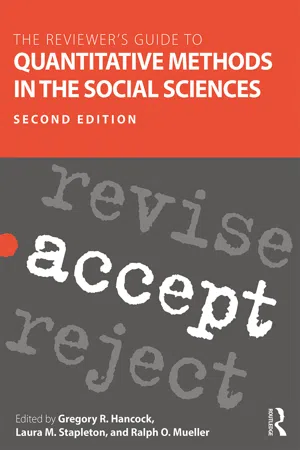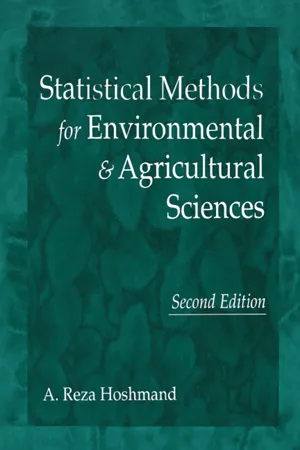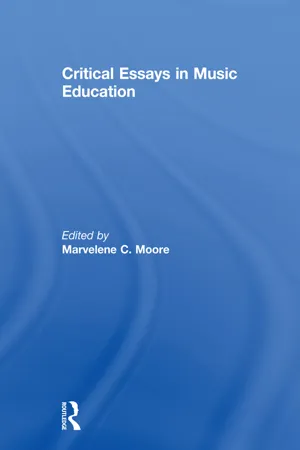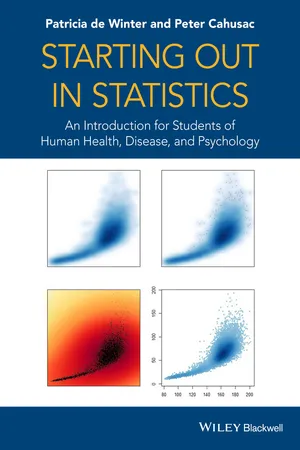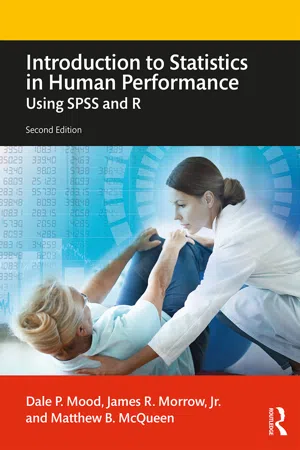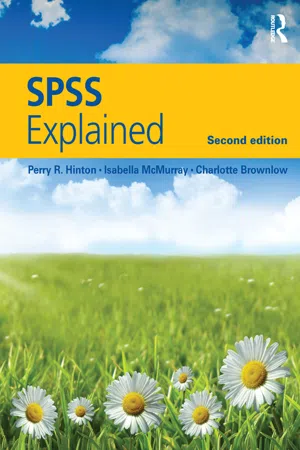Technology & Engineering
Non Parametric Statistics
Non-parametric statistics refers to statistical methods that do not make assumptions about the underlying probability distribution of the data. These methods are used when the data does not meet the requirements of parametric statistics, such as normal distribution or homogeneity of variance. Non-parametric statistics are valuable in situations where the data is skewed, contains outliers, or is measured on an ordinal scale.
Written by Perlego with AI-assistance
Related key terms
Related key terms
1 of 4
Related key terms
1 of 3
9 Key excerpts on "Non Parametric Statistics"
- Gregory R. Hancock, Laura M. Stapleton, Ralph O. Mueller(Authors)
- 2018(Publication Date)
- Routledge(Publisher)
26 Nonparametric Statistics Michael A. SeamanThe term “nonparametric statistics” refers to a large set of analytic methods that do not rely on distributions with specified parameters. When using traditional parametric methods, the parameter of interest (e.g., the mean) is also a parameter of the underlying population distribution (e.g., a normal distribution), but with nonparametric statistics there is no assumption that the population distribution has a form that depends on the parameter of interest. Other terms used for these methods are “distribution-free” or “assumption-reduced” methods. In brief, these are methods that researchers can use when they are uncertain about the characteristics of the population(s) from which their data are sampled.Most of the chapters in this book focus on a specific analytic technique. By contrast, this chapter is about a large set of techniques. Indeed, for many of the methods discussed in this book a researcher could instead choose an analogous nonparametric method. It can be a daunting task for a reviewer to become acquainted with such a large sub-discipline. Fortunately, the nonparametric methods used most in the social sciences cluster into two main groupings, and there are common characteristics within each grouping. A reviewer who becomes familiar with these characteristics can address most of the potential problems that might be present in a nonparametric analysis.The first group of methods is based on using the ranks of the observations. Further, it relies on permutations of the sampled data and associated hypotheses tests called permutation tests . Researchers use such tests for the same purposes as those who use common parametric techniques, such as the t- Reza Hoshmand(Author)
- 2017(Publication Date)
- CRC Press(Publisher)
Thus we have dealt only with statistical methods called parametric methods. The body of statistical methodology that is not concerned with population parameters and is not dependent on rigid assumptions about the population probability distributions is referred to as nonparametric or distribution free statistics. For example, we can use nonparametric methods to test hypotheses when the data used are ranks or ordinal. Ordinal refers to numbers that primarily express ranking, preferences, and hierarchy. For instance, an agronomist in ranking his or her preference for the vigor of three varieties (A, B, and C) of corn (Zeà mays) may use a scale of 1 to 5 (poor to excellent). If variety A receives a rating of five over variety B, which receives a rating of two, it is implied that the agronomist prefers A to B. The numbers given as ranks in this example, or the mean of such numbers, are not meaningful. Therefore, any statistical test requiring the calculation of means is not appropriate. Under such circumstances we use the nonparametric methods. If we have nominal data such as male or female, or yes or no, where there is no implication that one item is higher or lower than another, we also use nonparametric methods. Additionally, if the sample data collected are from the population that is not approximately normal with equal variances, we use nonparametric methods. There are several advantages to the use of nonparametric statistics: 1. The computations used in nonparametric statistics are easier to conduct and understand. 2. The assumptions concerning populations are less restrictive, and thus are applicable to a wider range of conditions. 3. We may use small sample data to obtain exact results, whereas a similar situation using parametric methods may require a large sample. The disadvantages of nonparametric methods are 1. Some information is ignored because order or rank may be used instead of numerical values of observations- eBook - ePub
- Clifford J. Drew, Michael L Hardman, John L. Hosp(Authors)
- 2007(Publication Date)
- SAGE Publications, Inc(Publisher)
Thus far, parametric and nonparametric statistical analyses have primarily been discussed in terms of group studies that use traditional experimental designs. This type of research has historically made greater use of statistical analysis than have investigations using single-subject experimental designs or many nonexperimental studies. There is, however, a continuing interest in the application of statistical procedures that are not traditional group studies (e.g., Anderson, 2002; Lall & Levin, 2004; Maris & Maris, 2003). The interested student may wish to consult these references for more detailed information regarding the use of statistical analyses in single-subject investigations.Comments on Parametric and Nonparametric Statistics
As noted above, three general areas are important in selecting parametric versus nonparametric analyses: (1) assumptions about the nature of the population distribution, (2) the type of data that are collected, and (3) the sample size. In all of these areas, parametric statistics have been the standard and have been more rigorous in terms of requirements. Parametric analyses require more stringent assumptions about the population distribution of scores, necessitate more sophisticated data, and require larger sample sizes. This does not, however, imply that nonparametric analyses are a panacea for researchers who do not wish to attend to these factors. Nonparametric statistics do not represent tools that may be applied in a capricious manner, with an expectation of the same outcome.The main advantage of nonparametric statistics involves the characteristics already described. They may be used in situations in which knowledge is lacking concerning the population distribution or in which the necessary assumptions for parametric analyses cannot be met. They may also be used in studies in which small samples are drawn and with more primitive types of data. If, however, the necessary requirements for parametric statistics are met, they are preferred over nonparametric analyses for a variety of reasons. Parametric statistics are more powerful than non-parametric analyses when they can be used. More powerful - eBook - ePub
- MarveleneC. Moore(Author)
- 2017(Publication Date)
- Routledge(Publisher)
Gibbons (1985, p. 29) suggests that nonparametric statistics should be chosen over parametric statistics when the assumptions required by parametric statistics are not satisfied by the data, when the fewest number of assumptions are met by the data, when sample size is small, and when a particular nonparametric test will provide a more adequate test of the null hypothesis. The mathematical simplicity of nonparametric tests adds to their attractiveness in that not only is their calculation simpler, but it is more likely that the user will understand and apply the tests appropriately (Conover, 1980).Nonparametric Statistical Tests
Selection of the appropriate nonparametric statistical test depends on the particular null hypothesis being tested and the data’s level of measurement. There are fewer nonparametric statistical tests than parametric tests. However, statistics are available for most situations involving traditional experimental designs. The nonparametric tests described here focus on tests relating to a single sample, related samples, independent samples, and measures of association. Single-sample tests are for those situations where only one group of subjects has been measured. Related samples are for when two samples have been measured but the samples are related in some way such as the same group being measured twice. Independent samples are two or more measured samples that are not related in any systematic way. Measures of association provide a means for determining the similarity or difference between two measures. For an easy-to-follow description of how to calculate the majority of statistics described here, the reader is directed to the work of Moore in the text by Madsen and Moore (1978) Experimental Research in Music: Workbook in Design and Statistical Tests. - Aliakbar Montazer Haghighi, Indika Wickramasinghe(Authors)
- 2020(Publication Date)
- CRC Press(Publisher)
6 Nonparametric Statistics6.1 Why Nonparametric Statistics?
It is believed that the idea about nonparametric is as nearly old as statistics, as early works in this theory go back to fifteenth and sixteenth centuries. Arbuthnot, a mathematician, investigated whether the number of male births is higher than the number of female births, during the period of 1629–1710. This is considered as the first sign test. Among statisticians, it is believed that the first work in nonparametric statistics belongs to the paper written by Hotelling (1895–1973) and Pabst (1936), who discussed about the rank correlation. The origin of the term “nonparametric” goes back to 1942 in a paper by Wolfowitz (1910–1981). Introduction of nonparametric in the literature moved the theory of statistics beyond the parametric setting.In inferential statistics, we considered some types of distribution regarding the underlining data. Statistical procedures based on distribution regarding the population are referred to as the parametric methods . For example, when calculating the confidence intervals or when conducting hypothesis test, we assume that the data comes from a normal distribution (or from t -distribution) and we use parameters such as the mean and the standard deviation. However, not all distributions contain parameters as normal distribution does. Hence, in those cases, we cannot use parametric methods; instead, we turn to use statistical procedures that are not based on distributional assumptions. Such methods are referred to as the distribution free-techniques or nonparametric techniques .In parametric methods, we usually make assumptions that the population is normally distributed and is symmetric about the mean. In such cases, all calculations are made based on these critical assumptions. But what if the normality feature is not present? Naturally, the use of mean as a measure of central tendency will not be available any longer. Thus, the nonparametric statistics steps in and help us in such cases letting us use the median instead and do all necessary calculations based on the median. Thus, if we desire to analyze data using parametric tests and the assumptions are not satisfied, nonparametric statistical procedures can be used instead.- eBook - ePub
Starting out in Statistics
An Introduction for Students of Human Health, Disease, and Psychology
- Patricia de Winter, Peter M. B. Cahusac(Authors)
- 2014(Publication Date)
- Wiley-Blackwell(Publisher)
9 Non-Parametric Tests – ‘An Alternative to other Alternatives' 9.1 Aims This chapter focuses on alternative statistical procedures which have been popular because no, or few, assumptions need to be made about the data. We will look in turn at non-parametric equivalents to the different types of parametric tests already covered in Chapter 6. Non-parametric tests are often referred to as robust procedures as they tend to be unaffected by extreme outlier data points, but they are generally not as powerful as parametric tests on normally distributed data. As we will see at the end of the chapter, these procedures are very good in their limited way, but lack the sophistication and flexibility of their parametric counterparts. 9.2 Introduction In many of the analyses referred to in earlier chapters we were interested in estimating one or more parameters from population distributions. We also had to make certain assumptions about the populations from which the data came. For example, in Chapter 6, we had to assume that our collected data were normally distributed and that the variances in the different groups were approximately equal. We had to estimate both the population mean(s) and variance(s). Analyses that involve making specific assumptions and estimating parameters are known as parametric tests. If we are unable to make these assumptions, or analyses do not depend on estimating specific parameters, then there are alternative statistical analyses known as non-parametric tests. They are also referred to as distribution-free tests because no assumptions need to be made about the distribution(s) of the population(s) from which the data were obtained. The analyses of categorical (nominal) data using chi-squared tests (Chapter 8) are also non-parametric. It is worth remembering that non-parametric tests are not completely assumption free - eBook - ePub
Introduction to Statistics in Human Performance
Using SPSS and R
- Dale Mood, James Morrow, Jr., Matthew McQueen(Authors)
- 2019(Publication Date)
- Routledge(Publisher)
14 Nonparametric StatisticsINTRODUCTION
For the most part, the statistical tests we have examined to this point are called parametric statistics. We call them parametric because of the nature of the distributions that are assumed with procedures such as correlation, the t-test, and ANOVA. Their accuracy depends on the validity of certain assumptions about the population from which the samples have been drawn and about the samples themselves. In most cases, we listed these assumptions for each of the tests we presented. The most common of these assumptions are normality, equal variances, and at least the interval level of measurement for the dependent variable. As we have indicated, many of the statistical procedures we have presented are robust to violations of the assumptions.Occasionally, it is not possible to meet these assumptions. For example, the measurement of muscle soreness often is limited to the use of an ordinal scale, such as extreme, quite sore, moderate, not too sore, and none (e.g., a scale from 5 to 1, with 5 being the most extreme soreness). In some situations, the available data are nominal in nature. For example, a researcher might be interested in determining whether an association exists between tobacco use and the achievement of 150 minutes of moderate to vigorous physical activity weekly, as suggested by the U.S. Department of Health and Human Services’ Physical Activity Guidelines Advisory Committee (2018) . For each subject, the data consist of an answer of yes or no to a question about each variable. For both of these two variables, the assumption of at least interval-level measurement for parametric statistical tests is obviously not met.Nonparametric statistics (sometimes called distribution-free statistics) do not depend on meeting parametric statistics assumptions. In general, nonparametric statistical tests are not as powerful as their parametric counterparts (principally because of the diminished amount of information that the lower level of measurement conveys), but they are extremely useful when only nominal or ordinal measurement is possible. Where the concern is about not being able to meet the normality assumption, Thomas, Nelson, and Thomas (1999 - eBook - ePub
Medical Statistics
A Guide to SPSS, Data Analysis and Critical Appraisal
- Belinda Barton, Jennifer Peat(Authors)
- 2014(Publication Date)
- BMJ Books(Publisher)
Before beginning the statistical analyses of a continuous variable, it is essential to examine the distribution of the variable for skewness (symmetry), kurtosis (peakedness), spread (range of the values) and outliers (data values that are extreme compared to the rest of the data). If a variable has significant skewness or kurtosis or has univariate outliers, or any combination of these, it will not be normally distributed, that is, the distribution histogram will not conform to a bell shape. Information about each of these characteristics determines whether parametric or non-parametric tests need to be used and ensures that the results of the statistical analyses can be accurately explained and interpreted. A description of the characteristics of the sample also allows other researchers to judge the generalizability of the results. A typical pathway for beginning the statistical analysis of continuous data variables is shown in Box 2.1.Box 2.1 Data analysis pathway for continuous variables
The pathway for conducting the data analysis of continuous variables is as follows:- check the range (minimum and maximum values) of each variable
- check for the presence and pattern of any missing data
- check for the presence of univariate/multivariate outliers: deal with outliers
- conduct checks of normality
- transform variables with non-normal distributions or recode into categorical variables, for example, quartiles or quintiles
- rerun distribution checks for transformed variables
- document all steps in the study handbook
2.1 Parametric and non-parametric statistics
Statistical tests can be either parametric or non-parametric. Parametric tests assume that the continuous variable being analysed has a normal distribution in the population. To check this assumption, the distribution of the variable for a sample, which is an estimate of the population, must be examined. In general, parametric tests can be used if a continuous variable is normally distributed variable. Other assumptions that may also be specific to a parametric test must also be checked before analysis.In general, parametric tests are preferable to non-parametric tests because a larger variety of tests are available and, as long as the sample size is not very small, they provide approximately 5% more power than non-parametric rank tests to show a statistically significant difference between groups.1 - eBook - ePub
- Perry R. Hinton, Isabella McMurray, Charlotte Brownlow(Authors)
- 2014(Publication Date)
- Routledge(Publisher)
Nonparametric two sample tests11
MANN-WHITNEY U TEST (FOR INDEPENDENT SAMPLES)WILCOXON SIGNED-RANKS TEST (FOR RELATED SAMPLES)When we wish to compare two samples, the test of choice is usually the t test. However, the t test is a parametric test that makes certain assumptions about our data, described in an earlier chapter.See Chapter 5When these assumptions are not met, the t test may not be appropriate, so we perform nonparametric tests which do not require these assumptions. A common occasion when we might use a nonparametric test is when our data is ordinal rather than interval. If we measure such things as time, speed or accuracy we can be confident that the data is interval. This means that we are measuring our results on a scale with equal intervals. For example, the difference between 23 and 24 seconds is 1 second, and the difference between 56 and 57 seconds is also 1 second. A second is always the same size wherever it is measured on the scale. However, when we produce ratings as our data, the data may not be interval. When we ask a teacher to judge the politeness of the children in a class or a boss to rate the management potential of the staff we have ratings. The teacher or the boss are not like clocks and speedometers, in that they may not use interval scales. The teacher might rate all the children very highly on a 0–10-point scale and never score a child below 7. The boss might rate one staff member as one point higher than another but believe that there is a big difference between them, and rate two others quite differently despite seeing them as similar. With ratings we cannot trust that the data is from an interval scale. However, we can trust the order of the ratings. That is why nonparametric tests do not analyse the raw scores butrank
Index pages curate the most relevant extracts from our library of academic textbooks. They’ve been created using an in-house natural language model (NLM), each adding context and meaning to key research topics.
Explore more topic indexes
Explore more topic indexes
1 of 6
Explore more topic indexes
1 of 4
